Last Chance to Catch NYC's Holiday Notalgia Train
We met the voices of the NYC subway on our nostalgia ride this weekend!


Never heard of Hudson Heights? You’re not alone. Hudson Heights is a quaint residential neighborhood of Manhattan that, quite frankly, few people outside of the island know about. The neighborhood is located on a tall plateau overlooking the Hudson River, ranging from about West 181st Street to Fort Tryon Park, and from Fort Washington Avenue to the Henry Hudson Parkway.
The neighborhood features historic buildings, rather inexpensive restaurants, and some strange finds, as well as some of the most scenic views in the city. Notable residents have even included Lin-Manuel Miranda and Henry Kissinger. Here’s our guide to the top 10 secrets of Hudson Heights.
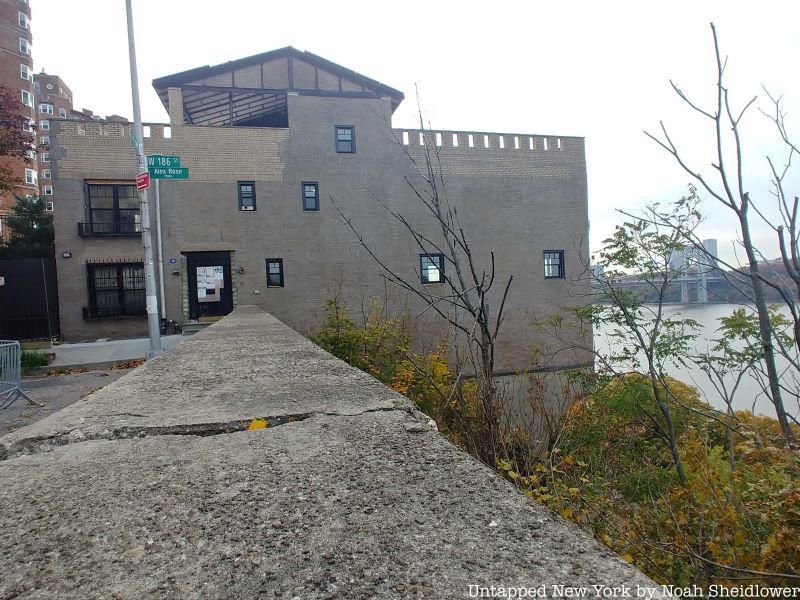
The Pumpkin House is often considered one of the strangest buildings in Manhattan. The 1920s townhouse is cantilevered off a cliff and juts out almost over the highway. The six-bedroom brick home at 16 Chittenden Avenue was commissioned by engineer Cleveland Walcutt on land owned by James Gordon Bennett. It includes a parlor floor, a “sun-drenched” dining room, a library, and a “French country” kitchen. The balcony looks out over the Manhattan skyline, the George Washington Bridge, the Palisades, and the Mario Cuomo Bridge.
The Pumpkin House was sold for $2 million in 2019 after remaining vacant for a few years. Some people certainly think that the home looks like a pumpkin, especially around sunset. The home is situated right next to Castle Village, but still offers a bit of privacy to residents.
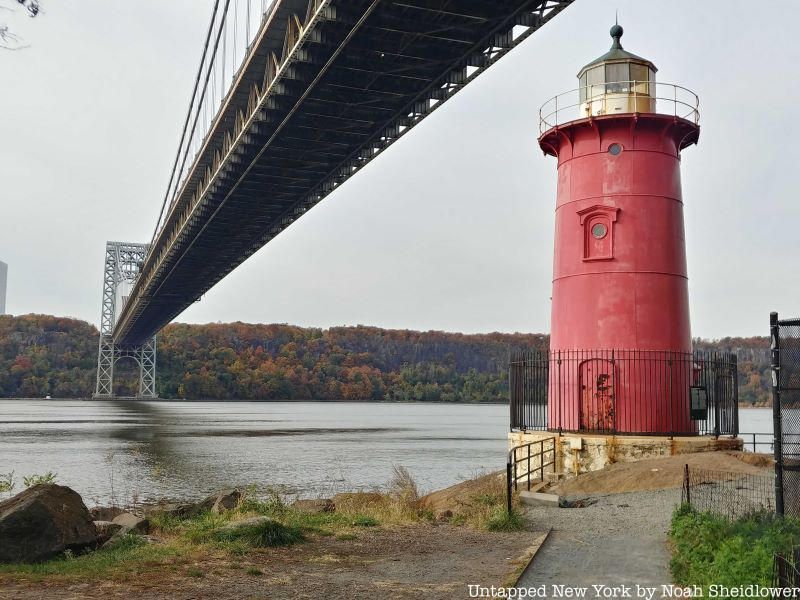
The Little Red Lighthouse, made popular by the 1942 children’s book The Little Red Lighthouse and the Great Gray Bridge, is a small lighthouse in Fort Washington Park easily accessible from the center of Hudson Heights. The lighthouse sits underneath the George Washington Bridge on Jeffrey’s Hook, which served as a crossing point for Native American mariners at the narrowest part of the Hudson. The lighthouse began as a red pole hung out over the river, and a light was added to the pole in 1889 to avoid traffic accidents.
The lighthouse was reconstructed in 1921 by the United States Lighthouse Establishment, and it used to be operated by a part-time lighthouse keeper. Yet as construction on the George Washington Bridge continued, the lighthouse was rendered virtually obsolete, and it was decommissioned and almost auctioned off. Local residents though advocated for its preservation, and it was deeded to the NYC Department of Parks and Recreation in 1951. The children’s book ends by encouraging readers to “see for yourself” the lighthouse next to the bridge, and visitors can get up close to the architectural gem (and sometimes go inside it).
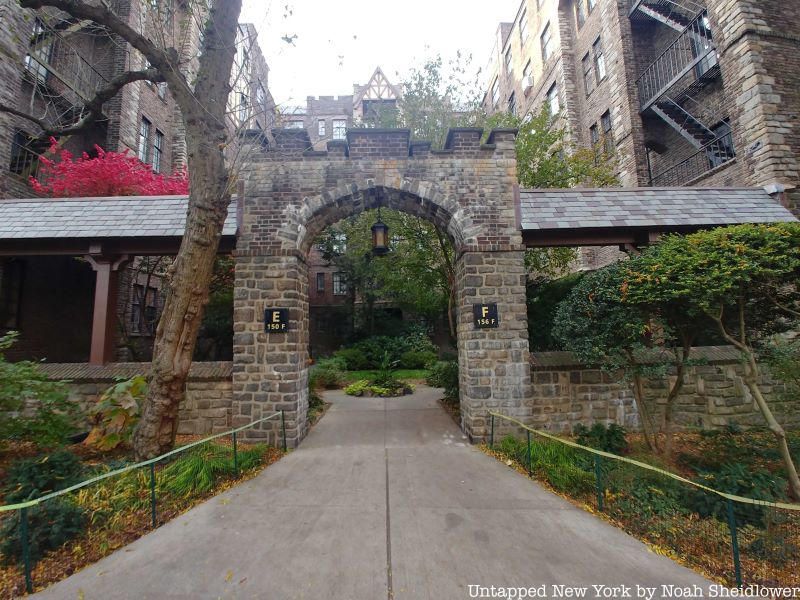
Hudson Heights was first developed in the 1920s and 1930s, so many of the neighborhood’s buildings are Art Deco. 250 Cabrini Boulevard, for example, features a set of Art Deco doors, while a number of buildings along Fort Washington Avenue also feature Art Deco exteriors. Tudor Revival-style buildings are also quite popular, as evidenced by Hudson View Gardens on Pinehurst Avenue and Cabrini Boulevard. Hudson View Gardens was constructed between 1923 and 1925 and is listed on the National Register of Historic Places. The cooperative was designed by George F. Pelham and today features gorgeous gardens, historic entrances and archways, and a private playground.
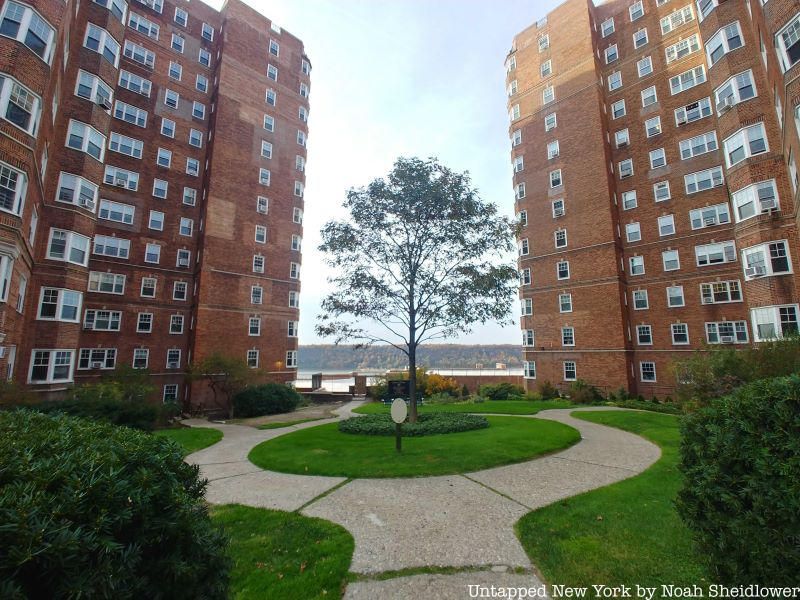
Across the street from Hudson View Gardens is Castle Village, a five-building cooperative apartment complex built between 1938 and 1939 by Charles V. Paterno. They were among the first apartment towers to use reinforced concrete, and they were modeled off medieval European castle keeps. The apartments are among the most expensive in the area, many with views of the Hudson River. Although many of the buildings and surrounding gardens and parks are pristine, this was not always the case; a 75-foot retaining wall below one of the gardens collapsed in 2005, resulting in a landslide.
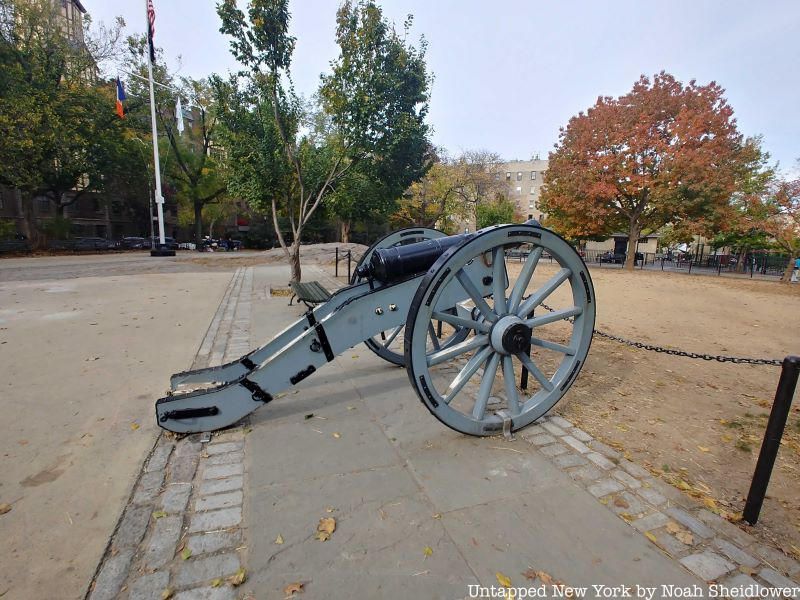
Located between Pinehurst and Fort Washington Avenues, Bennett Park was built on the site of Fort Washington. Bennett Park was named after James Gordon Bennett, Sr., who launched the New York Herald in 1835. The park opened in 1929 and features a notable elm tree planted on the bicentennial of George Washington’s birth. The park also honors Emilio Barbosa, who died on the USS Nevada at Okinawa.
Perhaps the most notable feature in Bennett Park — other than a cannon often used in Revolutionary War reenactments — is an outcropping of Manhattan schist which is the highest natural point in Manhattan. The rock stands at 265 feet above sea level, as denoted by a stone marker. A playground in the park was constructed in the 1940s.

At the site of Bennett Park — as denoted by a large marble, bronze and granite stele by the park’s entrance — was the Battle of Fort Washington during the American Revolution, fought on November 16, 1776. The British were victorious over the Patriots, who surrendered the garrison of Fort Washington in one of the worst American defeats of the war. A total of 59 Americans were killed during the battle, and another 2,837 were taken as prisoners of war.
Under William Howe, British forces defeated the Continental Army under George Washington at the previous Battle of White Plains. This made Fort Washington the only American stronghold in Manhattan. Nathanael Greene was ordered to abandon the fort and remove its garrison, but the fort’s commander, Robert Magaw, refused since he believed it could be defended. Although the Harlem River’s tides slowed down the attack, Howe led an assault on three sides, and Magaw eventually surrendered.
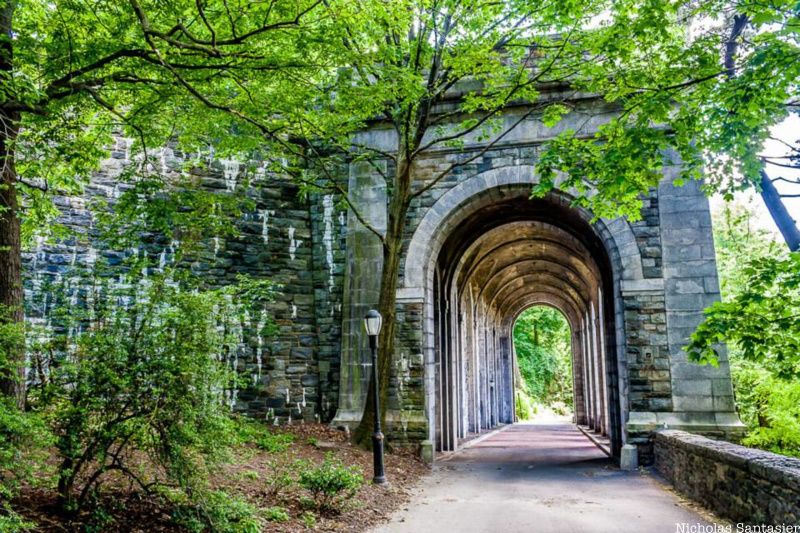
At the site of Fort Tryon Park was once a country estate owned by Cornelius K.G. Billings, a wealthy industrialist and horseman from Chicago. By 1907, the C.K.G. Billings estate was completed with a 25,000-square-foot lodge and stables, a luxurious mansion, and a yacht landing on the Hudson River at Dyckman Street. The lodge even offered views southward as far as the Statue of Liberty. In 1910, Billings had the entire estate photographed to document and showcase his wealth.
Although C.K.G. Billings’ mansion burned down in the 1920s, John D. Rockefeller salvaged the remaining structure and incorporated it into the park design. What survived is the Billings Arcade, a 50-foot arched structure that served as the original driveway. It is part of a 1,600-foot brick driveway that leads to the mansion through the Billings gatehouse, which was renamed the Fort Tryon Cottage. The cottage sits to the northwest of Corbin Circle.
The Billings mansion was not the only exquisite home in the area; Lucius Chittenden, a New Orleans merchant, built an estate west of the intersection of 187th Street and Cabrini Boulevard. Chittenden names a short avenue with a view of the Hudson River and with a few Art Deco buildings. Nearby was the home of C. P. Bucking, a manufacturer of sheepskins, who named it Pinehurst.
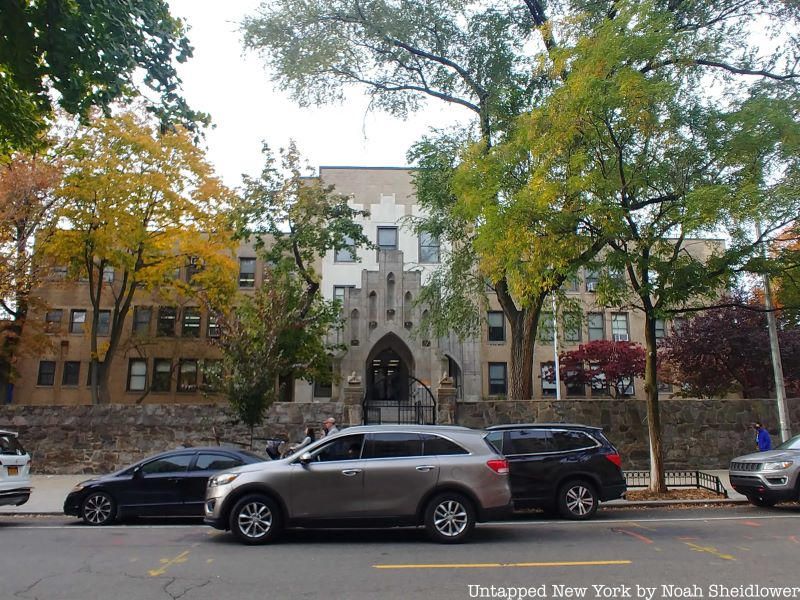
Mother Frances Xavier Cabrini, an Italian American Roman Catholic nun is entombed at her shrine on Fort Washington Avenue. Cabrini was the first U.S. citizen canonized as a saint by the Roman Catholic Church, almost 30 years after her death. She founded the Missionary Sisters of the Sacred Heart of Jesus, a Catholic religious institute. The Pope gave her the advice “Not to the East, but to the West” in instructing her to go to the U.S. to assist her fellow Italian immigrants. She also founded Columbus Hospital, which became the short-lived Cabrini Medical Center.
Throughout her life, she founded 67 missionary institutions for the sick and poor, one of which was a Catholic school at 190th Street. After her remains were moved there, the school began a pilgrimage site, and a larger shrine was built a few years after her canonization. Cabrini still rests in perpetual display at her shrine. She also names Cabrini Boulevard and the 16-story Cabrini Terrace.

Hudson Heights contains one of the only Russian groceries in Manhattan. Located on West 181 Street, Moscow on the Hudson offers a selection of smoked and dried meats, Russian cheeses, herring and caviar, dried fruits, frozen pre-prepared dishes, including some Georgian items like khinkali, and lots of freshly made baked goods. The store also has a small selection of health and beauty products, including cosmetics, herbs, and essential oils.
Moscow on the Hudson may seem out of place, but Hudson Heights is still home to many Russian residents, both recent immigrants and multiple-generation Russian Americans. Many Russian Jews live in the area and have set up small organizations devoted to preserving Russian culture.

The area was referred to as Frankfurt-on-the-Hudson in the years following World War II due to the high population of German and Austrian Jews. Although some of the first German immigrants to New York settled on the Lower East Side in the late 1800s, Hudson Heights had become the most populous German Jewish neighborhood in the city by the 1930s, and many of the area’s residents came from Frankfurt-am-Main. Residents of Hudson Heights created the Aufbau, which developed into a newspaper that reported on the atrocities of the Holocaust (which was very rare at the time) and included the writings of Albert Einstein, Hannah Arendt, and Thomas Mann.
This newspaper also included the 1941 publication of the Aufbau Almanac, which served as a guide to living in the U.S. that outlined the American political system and cultural norms. The paper exists today as a monthly publication based in Berlin. By the 1960s, though, the neighborhood had become significantly less German as residents moved to other parts of the city. And with Soviet immigrants settling here in the 1970s, the neighborhood’s nickname died away as well. Families from countries like the Dominican Republic settled in the area, many from neighboring Washington Heights, further rendering the nickname obsolete.
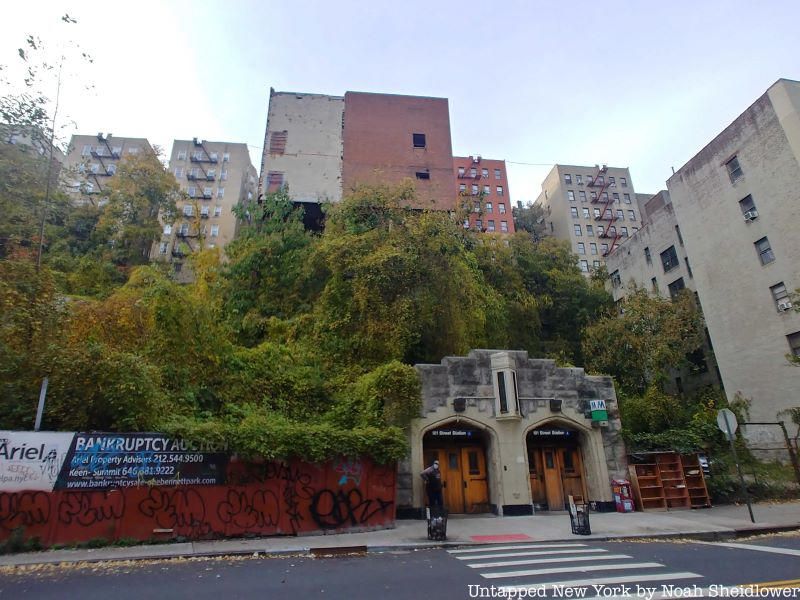
The A subway station at Fort Washington Avenue and West 193rd Street is the only New York City subway entrance built in Gothic style. Although constructed as a brick building at first, the stone facade was later added to match the entrance to Fort Tryon Park across the way. It is also one of the city’s deepest subway stations.
The other subway entrance in the neighborhood, the 184th Street entrance of the 181st Street station on Overlook Terrace, seems to jut off into nothingness from the outside as a rogue stone structure with amber-colored doors. The 184th Street and Fort Washington Avenue entrance also has a unique character, with a carved sign reading “SUBWAY” and a patterned central archway.
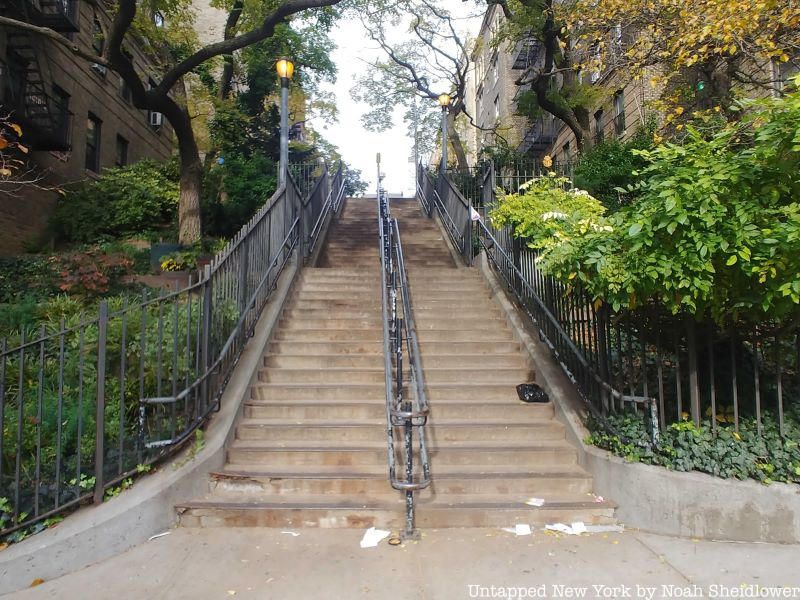
Since the area is called Hudson Heights, there are two notable staircases. One connects Overlook Terrace and Fort Washington Avenue, with nine stories of stairs, making it one of the longest outdoor staircases in the city. Another central feature of the area is a set of staircases running from Pinehurst Avenue to West 181 St., often used as a spot for photoshoots.
Next, check out the Top 10 Secrets of Fort Tryon Park!
Subscribe to our newsletter